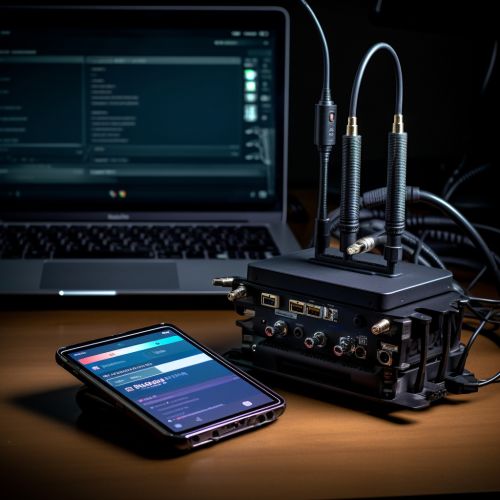Full-Duplex Transmission
Introduction
Full-duplex transmission refers to the simultaneous transmission of data in two directions. It is a communication system that allows data to flow back and forth between two devices at the same time. Unlike half-duplex transmission, where data can only flow in one direction at a time, full-duplex transmission allows for simultaneous communication, making it more efficient for data-intensive applications such as video conferencing and online gaming.
Understanding Full-Duplex Transmission
Full-duplex transmission is a key concept in telecommunications and computer networks. It is a mode of communication where data can be sent and received at the same time. This is achieved by using two separate channels, one for sending and the other for receiving data. The two channels are typically separated either by frequency or time, ensuring that the signals do not interfere with each other.


How Full-Duplex Transmission Works
In a full-duplex system, the transmitter and receiver operate at the same time and on the same frequency. This is made possible by using two separate physical channels: one for transmitting and one for receiving. The channels are separated by frequency or time to prevent interference. This allows for a continuous and simultaneous exchange of data, which can greatly increase the efficiency of a communication system.
Applications of Full-Duplex Transmission
Full-duplex transmission is used in many applications where simultaneous two-way communication is required. These include:
- Telephony: Traditional landline telephones are a prime example of full-duplex communication. Both parties can talk and listen at the same time.
- Video Conferencing: In video conferencing, full-duplex communication allows for real-time video and audio transmission.
- Online Gaming: In multiplayer online games, full-duplex communication allows for real-time data transmission, enhancing the gaming experience.
- Cellular Networks: Full-duplex transmission is used in 4G and 5G cellular networks to allow for simultaneous voice and data transmission.
Advantages and Disadvantages of Full-Duplex Transmission
Like any technology, full-duplex transmission has its advantages and disadvantages.
Advantages include:
- Simultaneous communication: Full-duplex allows for simultaneous two-way communication, making it more efficient than half-duplex or simplex transmission.
- Increased bandwidth: Because it can send and receive data at the same time, full-duplex effectively doubles the bandwidth of a communication channel.
- Real-time communication: Full-duplex allows for real-time communication, which is crucial for applications like video conferencing and online gaming.
Disadvantages include:
- Complexity: Full-duplex systems are more complex than half-duplex systems, as they require two separate communication channels.
- Cost: Because of their complexity, full-duplex systems can be more expensive to implement and maintain.
- Interference: If the two communication channels are not properly separated, interference can occur, affecting the quality of the transmission.
Future of Full-Duplex Transmission
With the advent of 5G and other high-speed, data-intensive technologies, full-duplex transmission is becoming increasingly important. Researchers are continuously working on improving full-duplex technology to increase its efficiency and reduce interference. One area of research is in full-duplex radios, which could potentially double the capacity of wireless networks.
